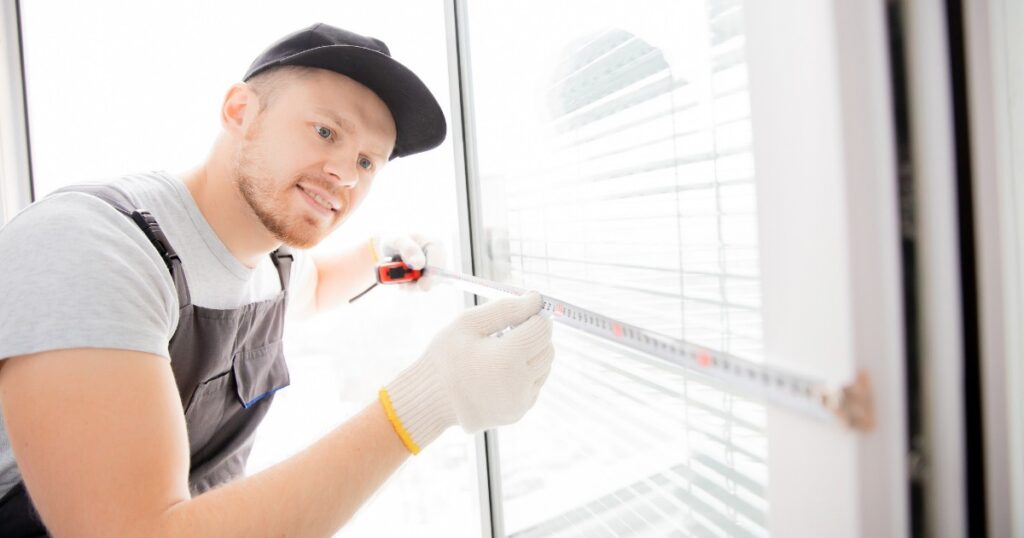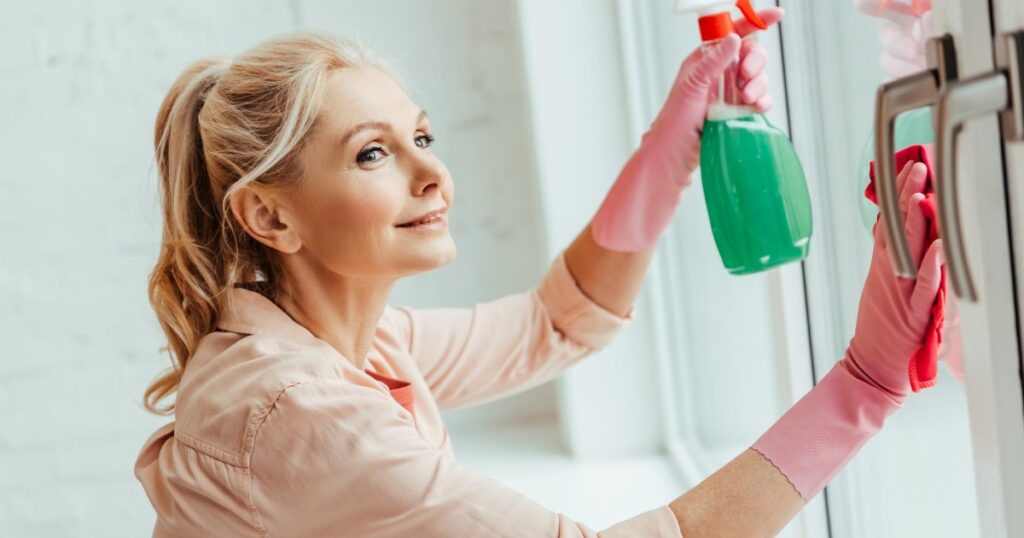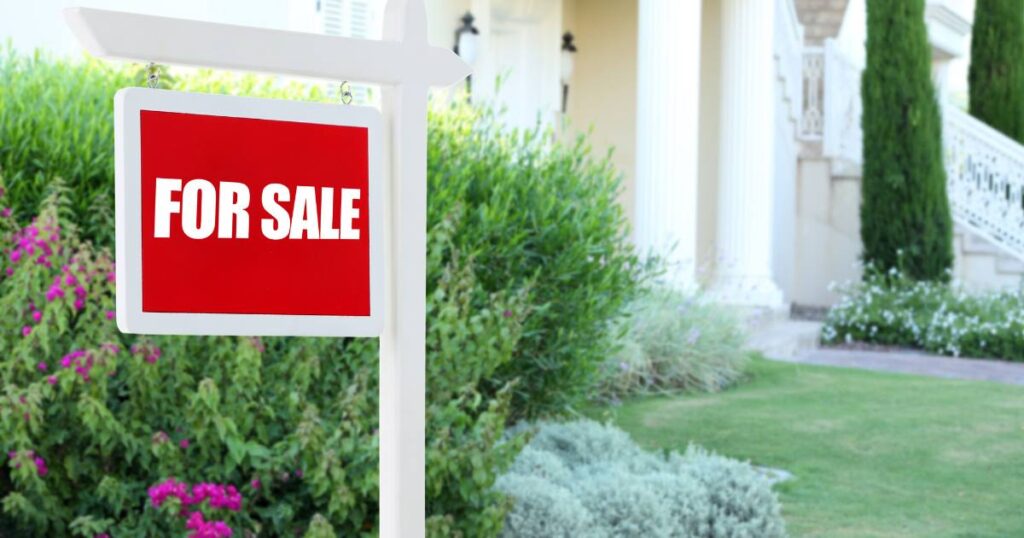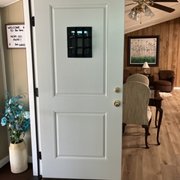Snowstorms can be beautiful, but they can also cause damage to our homes. Snowstorms can wreak havoc on our beloved castles, from ice dams and frozen pipes to broken tree branches and damaged roofs. That’s why having energy-efficient windows and siding is a good idea.
Energy-efficient windows and siding protect your home from the harsh winter elements and save you money on your heating bills. Using vinyl for your windows and siding is an excellent choice because of its durability, versatility, and cost-effectiveness.
The Importance of Energy-Efficient Windows and Siding
Living in an area with severe winters highlights the importance of safeguarding your home against the elements. Snowstorms can cause severe damage to your home. For example, ice dams can form on the roof of your house. An ice dam occurs when snow on a roof melts, but the colder edge of the roof refreezes the water, creating a barrier. This dam prevents further melted water from draining off the roof, causing it to accumulate and potentially damage the roof and interior of the house.
If you don’t have energy-efficient windows or siding installed on your home, the cold air from outside will seep into your home through any cracks or gaps in the materials. The lack of energy-efficient windows or siding makes it harder for your heating system to keep up with demand, resulting in higher energy bills.
The Benefits of Vinyl Windows and Siding
Vinyl is ideal for windows and siding because it’s durable, versatile, low maintenance, and cost-effective. It doesn’t rot like wood or rust like metal, so you won’t need to replace them as frequently as other materials. This is also versatile in style options; it comes in various colors that won’t fade over time, so you don’t need to worry about repainting them every few years.
Vinyl is a low-maintenance material that requires little upkeep compared to wood or aluminum. Energy-efficient windows and siding are important. They protect your home from the harsh winter elements, save you money on heating bills, and increase the value of your home. And if you’re looking for a durable, versatile, low-maintenance, and cost-effective material for your windows and siding, then vinyl is the best choice.
The Basics of Vinyl Windows and Siding
Builders have used vinyl, a synthetic plastic material, for several decades. Ethylene, crude oil, and chlorine are derivatives of vinyl. The resulting vinyl material is highly durable and resistant to all weather, making it an ideal choice for building exteriors.
Advantages of Using Vinyl for Windows and Siding
There are many advantages to using vinyl for windows and siding. First, it’s a highly affordable option compared to other materials such as wood or aluminum. Second, it’s incredibly low-maintenance – unlike wood, which needs regular staining to help maintain its appearance, vinyl simply needs periodic cleaning with soap and water. Another advantage of using vinyl windows and siding is their energy efficiency.
Vinyl has insulating properties that help keep the home cool during the summer and warm during the winter. The insulation can lead to significant savings on your energy bills over time.
How to Choose the Right Vinyl Products
First, consider your climate – some types of vinyl may be better suited to extreme temperatures than others. Next, look at the thickness of the vinyl material – thicker materials tend to be more durable and offer better insulation than thinner materials. Remember that thicker materials may be more expensive, so weigh your options carefully.
Consider the color options available – while white or cream-colored vinyl may be standard options from most manufacturers, other colors or patterns may require special ordering or customization. Overall, choosing high-quality energy-efficient vinyl windows and siding can make a big difference in both the comfort of your home during snowstorms or sunshine and the long-term savings on your energy bills.
Energy Efficiency in Vinyl Windows and Siding

It helps regulate temperature by preventing hot air from escaping during the winter and blocking hot air from entering during the summer. There is insulation built into the material. Vinyl has natural insulating properties, making it more effective than wood or aluminum. Insulated vinyl products are even better at avoiding unwanted drafts or noise pollution.
The Big Picture: Save Money, Save the Environment
The main goal is to save money on our heating and cooling bills, but did you know that energy-efficient windows and siding can also help reduce your carbon footprint? Using minimal energy to heat or cool the home contributes less to greenhouse gas emissions. Plus, when you install energy-efficient vinyl windows and siding, you’re investing in your home’s value. Not only will you save money on utility bills, but potential buyers will also be willing to pay more for an eco-friendly home.
The Science Behind Insulation
Insulation ensures your energy-efficient vinyl windows and siding are doing their job correctly. Without proper insulation, your home will still lose heat through the walls and roof. Insulation creates a barrier between the inside of your home and the outside world.
Comparing Materials: Why Vinyl Comes Out on Top
While there are many options for window and siding materials (wood, aluminum, and fiberglass), vinyl consistently comes out on top regarding energy efficiency. Vinyl is inherently resistant to heat transfer, meaning it does not conduct cold or heat as quickly as other materials.
Wood is a natural insulator but requires a lot of upkeep over time, with regular painting or staining necessary every few years, which can add up in cost over time. Aluminum is not known for its insulation properties and conducts cold and heat quite quickly, making it a poor choice for energy efficiency. Fiberglass is another good option, but it can be pretty expensive. Vinyl wins in energy efficiency while being cost-effective and low-maintenance compared to these other materials.
Installation Process

Step-by-Step Guide to Installing Vinyl Windows and Siding
Installing vinyl windows and siding may seem daunting, but it’s quite straightforward. Here’s a step-by-step guide to help you through the process:
- Measure the area: Before beginning the installation process, it is crucial to accurately measure the area where you will install the vinyl windows or siding. This step ensures you have the appropriate material and guarantees a proper fit.
- Removing Old Material: Before installing the new vinyl windows or siding, removing any existing windows or siding from the designated area is essential. Take care to discard the old materials following proper disposal guidelines.
- Prepare for installation: It is essential to ensure that the surface where the vinyl windows or siding will be installed is clean and debris-free. This step creates a suitable environment for a successful installation.
- Installing Trim Pieces: It is recommended to install trim pieces around window frames or corners of your home before installing the vinyl windows or siding. This step helps enhance the aesthetic appeal and provides a finished look to the overall installation.
More Steps in the Installation Process
- Attaching Starter Strips: For a proper vinyl siding installation, it is necessary to use starter strips. Begin by attaching these strips at the base of your exterior walls. They should be placed at least 8 inches above ground level. Starter strips provide a solid foundation and ensure a secure attachment to the vinyl siding panels.
- Installing Vinyl Panels: With caution, begin the installation of each vinyl panel by starting at one end and progressing across the designated area until the entire installation is complete. Care to align the panels properly and secure them according to the manufacturer’s instructions. This step ensures a seamless and visually appealing finish.
- Installing J Channels and Corner Posts: Install J channels and corner posts to facilitate the proper alignment and accommodate expansion and contraction during temperature fluctuations. Follow the manufacturer’s instructions to properly position and attach the J channels and corner posts at appropriate locations.
- Installing Flashing Tape: As a final step before installing new windows, apply flashing tape around all edges of every window opening. This step provides an additional layer of protection against moisture and helps create a weather-tight seal. Follow the manufacturer’s instructions to apply the flashing tape properly, ensuring full coverage and a secure bond.
Tips For Ensuring Proper Installation
Properly installing your energy-efficient vinyl windows and siding to perform optimally in snowstorms and sunshine conditions is essential. Here are some tips to help:
- Follow manufacturer instructions carefully: It’s essential to follow manufacturer instructions when installing your vinyl windows or siding – skipping steps can result in costly mistakes down the road!
- Use quality materials: High-quality materials will not only look better and last longer, but they’ll also help with energy efficiency.
- Hire a professional: If you’re not confident in your DIY abilities, consider hiring a professional to install your windows or siding. A skilled installer can help ensure everything is installed correctly and guarantee the best energy-efficient performance.
- Check for air leaks: Test for leaks around windows or doors using a candle flame after installation. It indicates an air leak that needs to be sealed if the flame flickers.
Maintenance Tips

How to Clean Vinyl Windows and Siding
Vinyl windows and siding require regular cleaning to maintain their beauty and longevity. Cleaning them is straightforward and can be done using simple household items.
Combine warm water and mild detergent in a bucket. Dip a soft-bristled brush in the mixture. Scrub the vinyl surface gently, reaching all corners and edges. You can use vinegar or baking soda instead of detergent if there are stubborn stains or dirt buildup.
You may need to rent or purchase a pressure washer for tough stains like mold or mildew. Though you need to be careful when using high-pressure sprays, they can damage vinyl if not used properly.
Common Issues That May Arise (e.g., warping, fading)
While vinyl windows and siding are durable and low-maintenance, they are still susceptible to common issues. Warping is one of the most common issues, which occurs when vinyl expands or contracts due to temperature changes. This problem can be prevented by ensuring proper installation and adequate expansion gaps around frames. Another issue is fading caused by exposure to sunlight over time.
Although vinyl siding has built-in UV protection, prolonged exposure can cause color changes over time. To minimize fading, consider choosing darker colors that absorb less sunlight.
Cracking may occur during extreme weather conditions such as hailstorms or heavy snowfall. Fortunately, cracks on vinyl surfaces are usually superficial and do not affect performance unless they become too large or deep.
Regular cleaning and inspection of your home’s vinyl windows and siding can help identify potential issues before they become more severe problems. A little bit of maintenance goes a long way toward keeping your home looking great for years to come!
Additional Benefits of Vinyl Windows and Siding

Noise Reduction Properties
One of the often-overlooked benefits of vinyl windows and siding is their ability to reduce outside noise. Noise reduction is essential if you live in a busy neighborhood or near a freeway. Vinyl windows have a multi-chambered frame that helps to absorb sound waves. It reduces the amount of noise that enters your home.
Insulated vinyl siding can also help reduce noise pollution by deadening sound waves from the outdoors. A study by the National Association of Home Builders found that homeowners who installed vinyl windows experienced an average reduction in exterior noise levels of 30%.
Increased Home Value
As a homeowner, any changes you make will affect your home’s value. Fortunately, investing in high-quality vinyl windows and siding can increase your home’s resale value.
According to Remodeling Magazine’s Cost vs. Value report, homeowners who replaced their old windows with new vinyl ones saw an average return on investment (ROI) of 72%. Similarly, replacing old siding with new insulated vinyl siding resulted in an average ROI of 75%. Why do these upgrades result in such a high ROI?
For one thing, potential buyers appreciate the energy savings they’ll enjoy with energy-efficient windows and siding. But they also recognize that these upgrades can enhance a home’s appearance and curb appeal- two important factors when selling a property.
Final Thoughts
It’s clear that energy-efficient vinyl windows and siding are a smart investment for any homeowner. They also help homeowners save money on energy bills.
Homeowners can enjoy various benefits by choosing vinyl products. Vinyl is durable, low-maintenance, and can even increase the value of your home. When it comes to installation, proper installation is critical for maximizing the benefits. Following the manufacturer’s instructions carefully and hiring a professional. This can ensure that your new windows and siding are correctly installed.
Investing in energy-efficient vinyl windows and siding is a wise choice. So whether you’re bracing for a winter storm or enjoying sunny skies, you can rest easy knowing your home is protected with high-quality vinyl products.



























